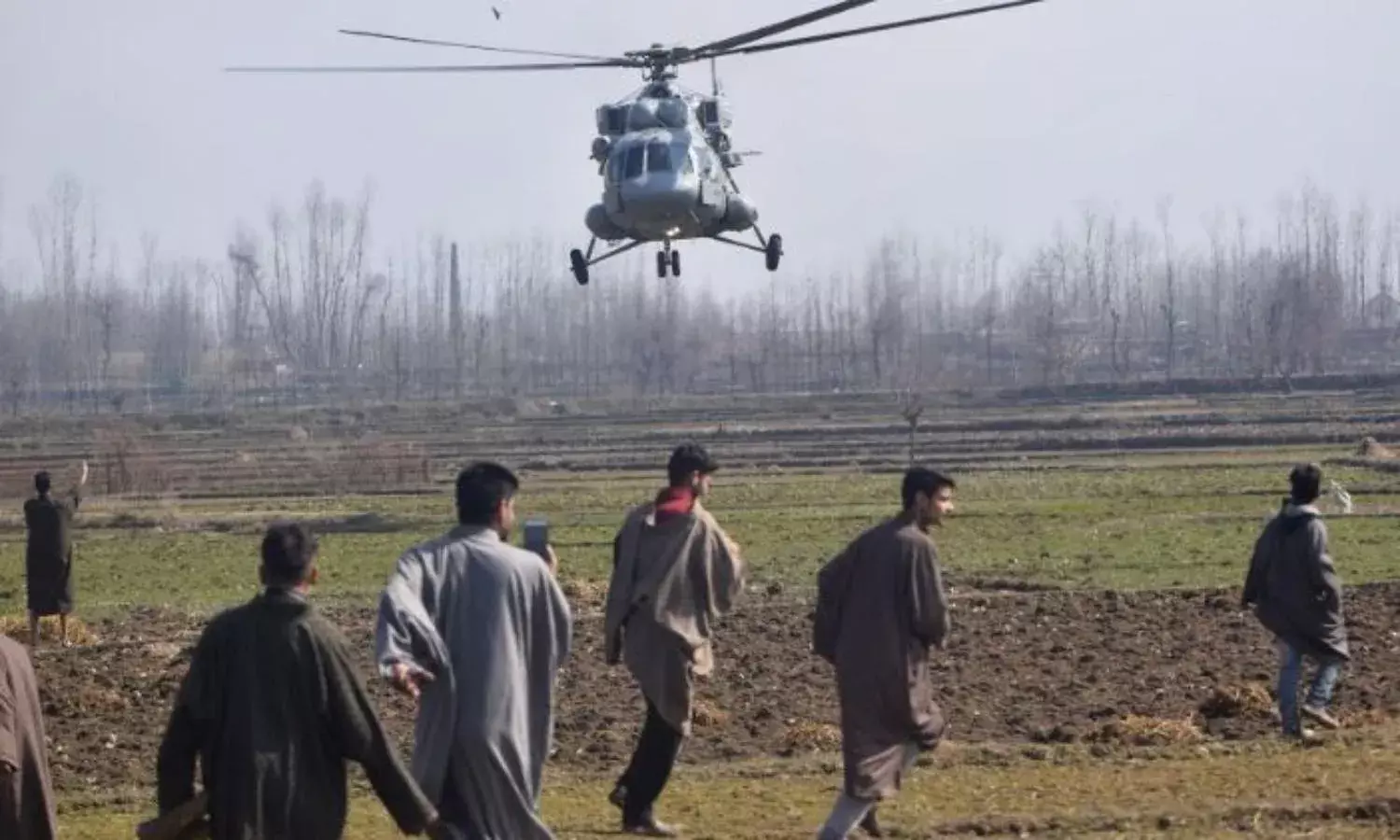Back to the Pulwama Basics
After Pulwama and Balakot,what about peace?
In the aftermath of the attack at Pulwama that killed 44 CRPF jawans Prime Minister Modi stated that the army had been given the go ahead to take suitable action. BJP President Amit Shah and many BJP leaders asserted that since this was a Modi government, not Congress, proper action would be taken. The atmosphere being created seems to suggest that with Modi in power national security is being well taken care of, unlike the earlier weak Congress governments.
Even without going into the cross-border actions by the Indian Air Force since, the Pulwama attack raises a lot of questions about the BJP government’s ability to protect our borders. How could a car loaded with such a huge quantity of RDX sneak onto the high security Srinagar-Jammu highway to begin with? Who is responsible for this security lapse?
One recalls that in the aftermath of 26/11 2008, when Mumbai was attacked by ten well armed terrorists who came in a dinghy and landed on Mumbai’s shore, Union Home Minister Shivraj Patil and Maharashtra Home Minister R.R.Patil both had to resign.
The business of rectifying mistakes begins with tightening the lapses. But nobody is being taken to task for the massive security lapse at Pulwama. The state of security was further revealed when we came to know that that PM Modi was unaware of this attack for a good period of time as he was busy shooting for a film at the Jim Corbett resort.
What was most disturbing in the aftermath of the Pulwama attack was how Kashmiri students and traders were targeted in different places like Dehradun, Ludhiana and Aurangabad. Most of the attackers were associated with Hindu right wing groups. While many Sikh groups came to their rescue it was the Supreme Court which ordered that Kashmiris should be given protection.
It is much later that PM Modi stated that Kashmiris should not be attacked, by which time a lot of damage was already done. As in the earlier cases of attacks on Dalits in Una or the targeting of Muslims in cow related lynchings, Modi opened his mouth to oppose these attacks either formally or late enough to let the damage take place.
Some of our TV studios and news channels, which already spread ultranationalism and hate, intensified their anti-minorities, anti Kashmiri rhetoric. The targeting of Kashmiri students and Kashmiri traders has had support mainly due to the atmosphere created by a section of the media, and the vigilante groups.
In this atmosphere came the statement by Meghalaya Governor Tathagata Roy calling for a boycott of Kashmiris. This is totally against the spirit of our Constitution and he must be prevailed upon to take back this call.
The most surprising part of this incident was the attack on the Bangalore franchise of Karachi Bakery. Incidentally the foundation of this chain was laid by Khanchand Ramnani, who migrated to Hyderabad, India at the time of partition.
As these incidents show, while this government is strong on rhetoric and showing bravado, its record in dealing with terrorism and internal security has been abysmal.
The available data from official sources tell us that the number of terror related attacks, of those joining militancy and of security personnel killed during the NDA regime has been much higher than at the time of the UPA regime.
Data from an IndiaSpend analysis (a non-profit data portal) based on government data shows that over 800 terror incidents were reported in J&K over the three years ending 2017, increasing from 208 in 2015 and 342 in 2017. As many as 744 people died in these three years: 471 terrorists, 201 security personnel and 72 civilians.
The main reason for this rise has been the insensitive policies of the BJP government in which dialogue has been replaced by pellet guns.
In response to the Pulwama attack the government has dispatched more troops to the area, the security cover of separatist leaders has been withdrawn, and youth have been warned of dire consequences if they take up guns.
One recalls that even Adil Ahmad Dar, who drove the car which rammed into a CRPF truck, had taken to this path of terror after being thrashed by the military a year before, after which he took to this path which landed him in the lap of the Jaish E Mohammad.
One only hopes that the present action across the border by the Indian armed forces does not escalate further. National sentiments have been roused, trade has been curtailed by withdrawing the ‘most favoured nation’ status to Pakistan. As such we need to introspect, can this region afford violence over and over again?
The underlying factors leading to the India-Pakistan-Kashmir discord need to be tackled through a process of dialogue. The hope and prayer is that this limited strike, also being called ‘the second surgical strike’, remains just that and not no more.
Pakistan Prime Minister Imran Khan has in the face of aggressive postures offered to take action if proper evidence is given to Pakistan. He has also shown his willingness for talks.
Meanwhile the United Nations Secretary General has offered to mediate in the process to bring peace and amity in the region. These are the olive branches we need to grab to see that this decades-long problem is sorted out.
India as a country direly needs to bring the issues related to development, corruption, jobs and the agrarian crisis back on the table. It is the resolution of these issues which will bring in peace and prosperity in the region – away from the smell of gunpowder and hatred of minorities in the air.





